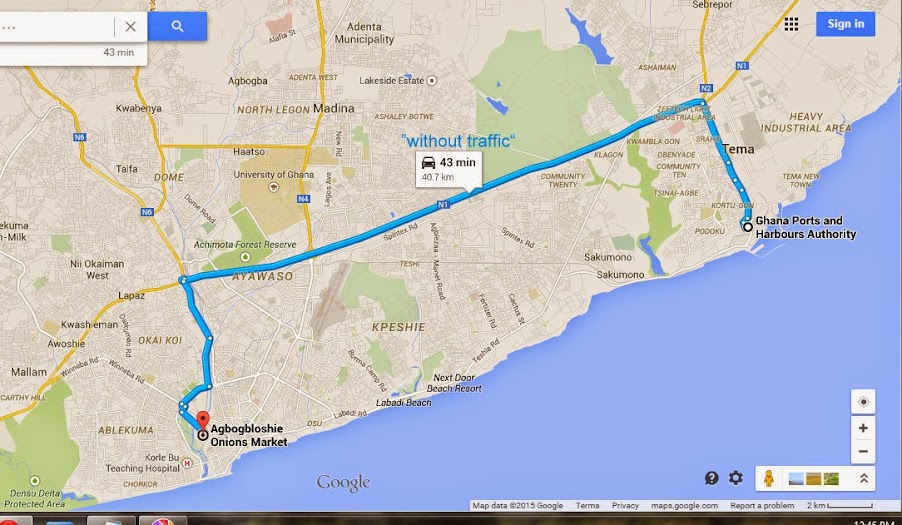Hoax: Investigators call out Agbogbloshie "E-Waste Tragedy"
Three weeks of research at Ghana "e-waste dump" and review of UN Studies and World Bank data confirm waste in pictures was not "dumped" by Western recyclers.
As Americans and Europeans once again are confronted by photos of old white monitors and CRT televisions in a dumpsite in Accra, Ghana, recent investigation confirms suspicion that the story repeated by news sources is a hoax. Three reports on Agbogbloshie, Ghana, and "ewaste" appeared last week:
"'Developed countries export millions of tonnes of electronic waste annually into developing countries such as Ghana,' the group based in the country claims on its website." - Daily Mail
“People just load up containers to places like Ghana with enough working stuff to satisfy the importers and and then the rest is junk, and that junk gets smashed,” Puckett says. -
"Agbogbloshie, reportedly the world’s largest e-waste dumping site... is now a field home to thousands of tons of the world’s electronics." - Washington Post
Recycling experts have long noted that the number of pieces of junk electronics visible in photos (e.g. Wired News link) do not appear to support the claims made in the articles. Several major media have reported that "millions of tons" of used western electronics are dumped in Agbogbloshie, Ghana, and that "80 percent" of used goods imported are actually not reused. The Guardian claims it is "the world's largest e-waste site". But the landscape (behind posed scrap workers) is relatively barren.
A three week investigation involving data journalists, trade news reporters, Ghana customs officials, local Dagbani speakers, and African electronics technicians found that Agbogbloshie only managed between 20 to 50 used electronic pieces per day - a nearly infinitesimal amount as compared to "millions of tons per year" claimed in mainstream press articles on the site. Most scrap workers at the site is concentrated on junk automobile recycling, and most of the wires being burned were from automobile harness wire. The electronic or "e-waste" material being recycled was collected locally, and manually, by push cart, from neighborhoods and businesses in Accra.
Is the "world's largest e-waste site" a hoax?
Is the "world's largest e-waste site" a hoax?
The researchers reviewed 2 United Nations reports from 2011 and 2012, which assessed hundreds of sea containers of electronics, to compare against the claims by NGO's. The UN reports contradict the claim that most of the goods imported are dumped in Agbolgbloshie rather than reused and repaired by Ghana technicians. World Bank metadata also supported the claims of the scrap workers that the scrapped appliances shown in films were owned by Africans and had been in use for many years. Africa has over 600 television broadcast stations.
Investigators stressed that concerns over health and pollution were genuine, and expressed particular concern over workers who eat lunch or drink water with hands contaminated by leaded soil. "We do not condone the conditions at Agbogbloshie. We only note that ending imports and arresting repairpeople will do nothing to address the problem," said Robin Ingenthron of WR3A, who organized the investigation. Copper wire burning by teenagers is not unique to Africa, however. Reports of copper wire burning in Europe and California emphasize the same "primitive recycling" practices occur in many cities, and are associated with unemployment and high copper prices.
Analysis of the claims by anti-trade NGOs showed their versions of the story to be mathematically and economically impossible. NGO press releases which simultaneously claim "millions of tons" are imported in 500 sea containers per month would indicate a sea container with well over 800,000 pounds per truckload.... the maximum one holds is 42,000 lbs. The cost of shipping used computers from the USA is approximately $10,000 - $14 per television. That is seven times more than the scrap value. While many of the alarming press releases contain data which are prima facia contradiction of the claims, an emphasis on "child workers" and exotic photography still deliver a powerful message of guilt and liability in the western press.
WR3A spokesperson Robin Ingenthron offered the reporters direct access to African technicians. The technicians participated in the investigation, and strongly cautioned editors and readers from accepting claims which do NOT interview the Africans who paid for, owned, and generated the "waste" in the photos. WR3A also provided several studies which provide actual vetted data on e-waste exports rather than rely on emotional or racially charged photos. Despite many headlines which empasize "child workers" employed in recycling, fewer than 1 percent of the workers in Agbogbloshie appeared to be under 18 years old. One young man, Rachid, was shown his own photo in a Washington Post story, which indicated he was "between 12 and 18 years old". Rachid is 22, and married, with a child.
"Africa has plenty of real problems," said Wahab Odoi, a technician and translator. "We don't need NGOs to make up pretend problems for us." Wahab Odoi suggested that donors find other causes to donate to and other environmental crimes to investigate, such as illegal ivory poaching.
A report on the trip and findings will be published soon.
http://tinyurl.com/hoaxAgbo







